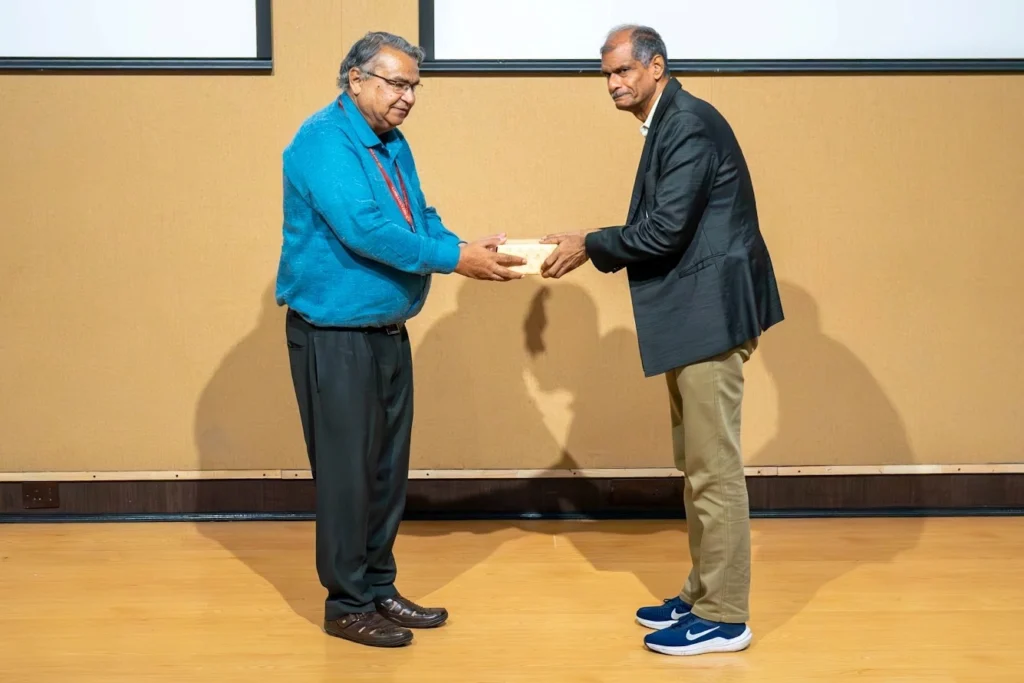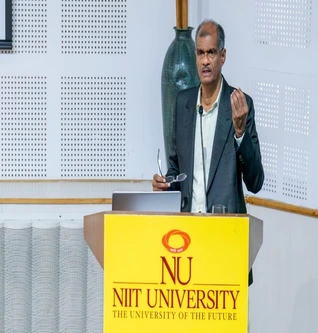
NU TALF – Invited Talk on Jambudvipa – The Puranic View of Earth
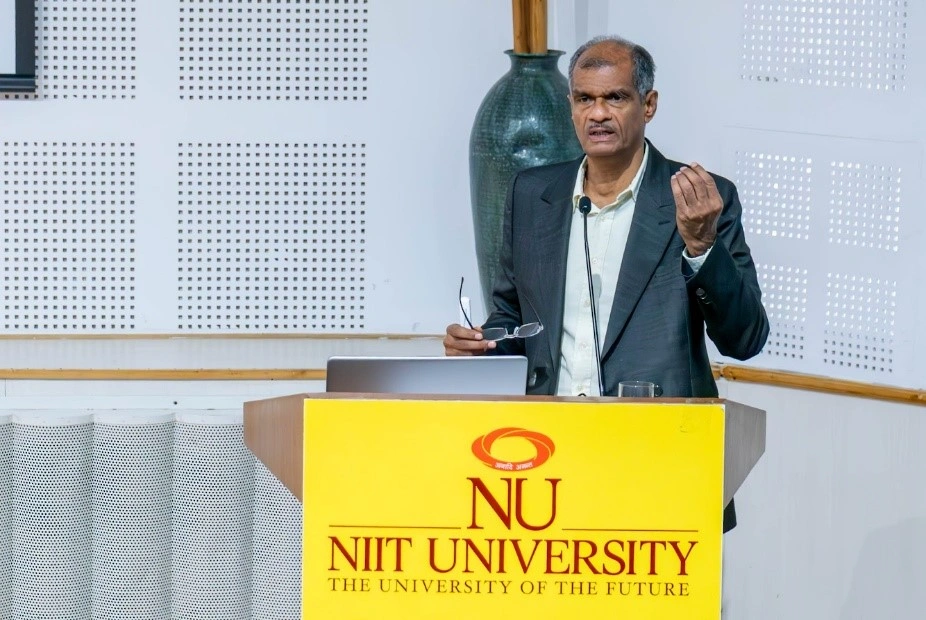
Date: April 11 2025
Time: 4:00 pm onwards
Venue: Auditorium
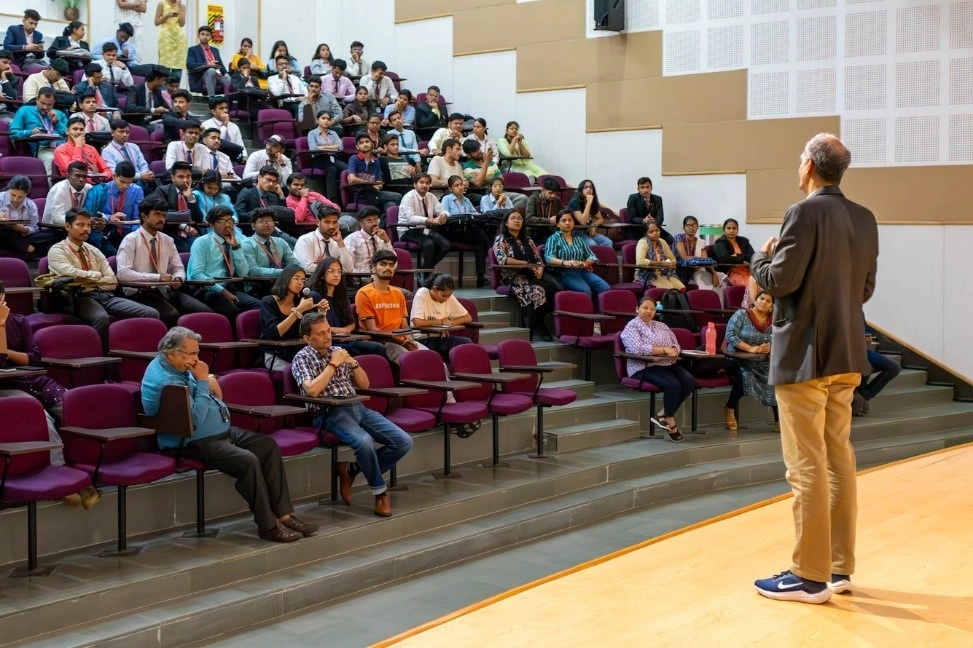
The Asian Lenses Forum (TALF) at NIIT University hosted a unique and intellectually enriching guest talk titled ‘Jambudvipa – The Puranic View of Earth’ on April 11, 2025, in the university auditorium at 4:00 pm. The session offered students and faculty an opportunity to engage with ancient Indian cosmological thought, as depicted in the Puranas.
The speaker, Mr. Ganesh Swaminathan, an alumnus of IIT Delhi and IIM Ahmedabad, brought a rich blend of academic excellence and practical experience to the discussion. With a global career spanning multiple sectors and a recent Master’s in Puranic Cosmology, Mr. Swaminathan is also the author of From the Beginning of Time: Modern Science and the Puranic Universe, a work that delves into Indian scriptural insights on the origins of the universe.
In his talk, Mr. Swaminathan introduced the audience to the concept of Jambudvipa, the central landmass in ancient Indian cosmology as described in various Puranic texts. He outlined how the sages of ancient India conceptualized geography, time cycles (Yugas), and the broader cosmic order—offering interpretations that blend metaphysical perspectives with symbolic representation.
The session was both contemplative and thought-provoking, bridging the gap between modern scientific understanding and traditional wisdom. Mr. Swaminathan emphasized that ancient cosmology, while often dismissed as mythology, contains embedded insights into human consciousness, ethics, and harmony with nature.
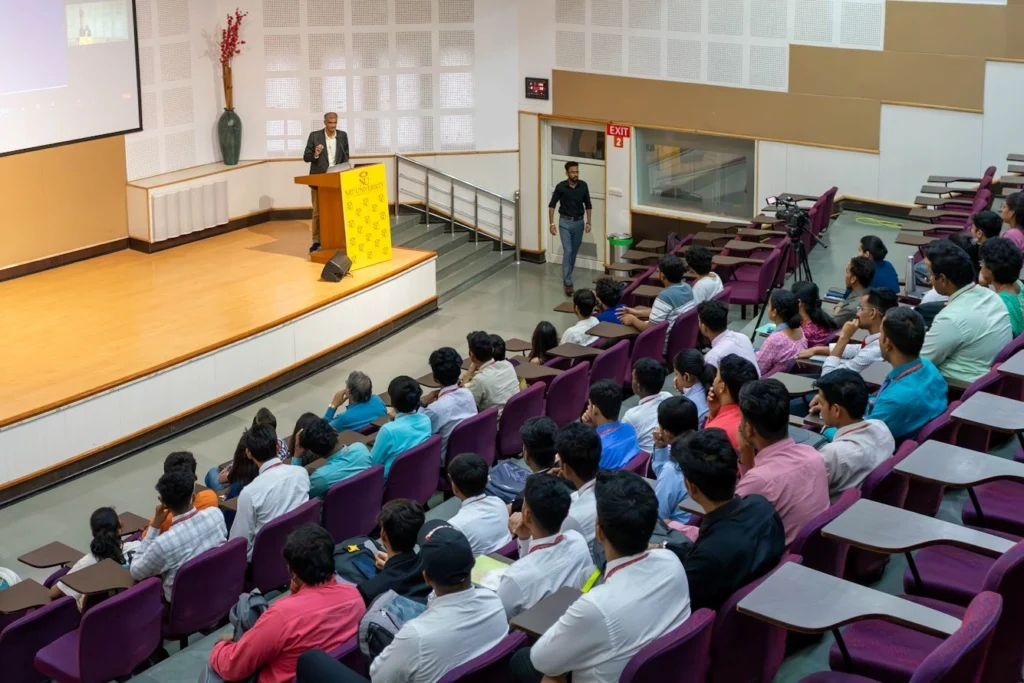
Audience members engaged in a dynamic Q&A session, asking questions ranging from the symbolic meaning of Jambudvipa to how ancient cosmological views compare with modern astronomy. The event left participants with a deepened respect for India’s intellectual heritage and an invitation to explore more through critical, yet appreciative, inquiry.
